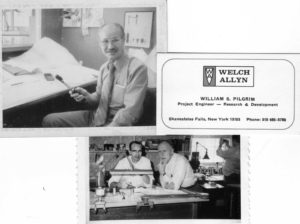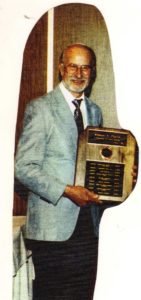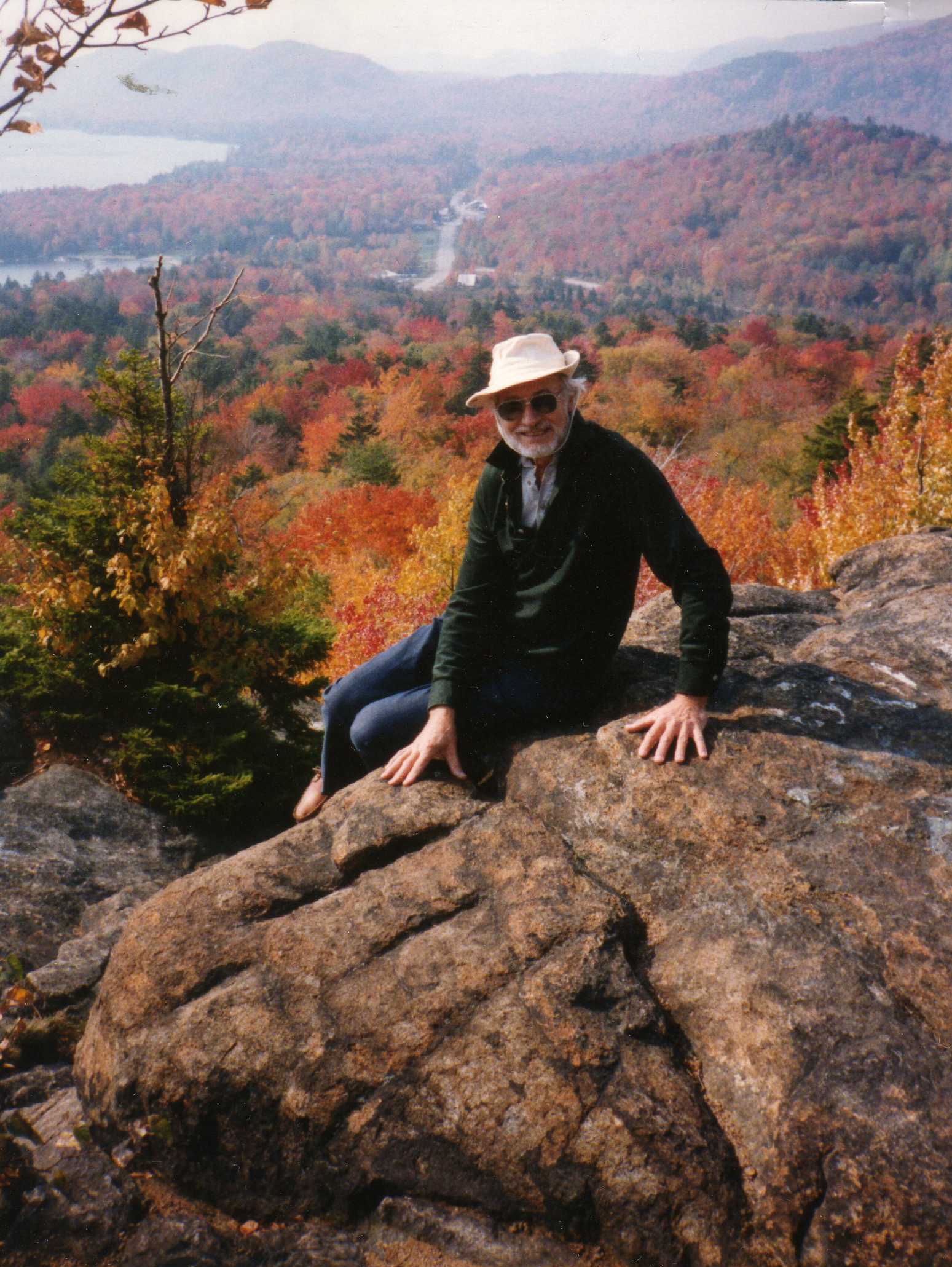By Anita Messina
Bill Pilgrim is remembered as Port Byron’s Chairman of the Zoning Board of Appeals, as president of the Port Byron School Board, as a friend with a great sense of humor. But not many knew he was the holder of nine patents, each responsible for an improvement in medical instruments manufactured at Welch-Allyn.
People recall he was a thoughtful, introspective man, a gentle man who thought for himself. Son-in-law, Dewey Lincoln, said notwithstanding his many serious accomplishments he infused life with a fun-loving nature and a playful antic now and then.
Family members say he could fix anything, build anything, improve anything. In the 1960s he and his wife Elizabeth made a home out of a vintage building in Thendara, in the Old Forge area. It wasn’t exactly bare-bones; after all it came with two light bulbs and a Round Oak Stove, and they transformed that shell of a shack into a home.
Bill, William Stanley Halcrow Pilgrim, was born in The Pas (correctly pronounced “Deh Paw”) a remote village in Manitoba, Canada. Bill was formed with all the best genes of a Scottish father and a Cree mother. The family owed the Pilgrim Bottling Plant, and in 1900—long before bottled water became the industry it is today—they bottled water for the copper miners to have on their long work days. The Pilgrims saw a need and they met it. That’s how Bill grew up: he saw a need, and he met it. And through his life he saw an opportunity, and he took it.
When he was six years old, he looked ahead to the Rainbow Bridge that crossed the Niagara River gorge from Ontario, Canada to Niagara Falls, New York. He rightly figured that was an auspicious bridge to walk across. His sister Margaret Hutchinson remembers he crossed with stamina and resolve, taking enough small footsteps to cover a distance of nearly three football fields from one end of the bridge to the other. Margaret said at the same age he was capable of driving his own team of huskies and a dog sled. And he was always teaching himself something new. At 12, with a curiosity in photography, he converted his bedroom closet into a dark room and learned how to develop pictures. Nobody taught him how to do that. No one showed him what to do.
When he was 13 and living in Cortland, he showed a wily inclination to take advantage of circumstances. He and his brother, Joe, had a paper route, and each day they toughed the early-morning weather to walk their route, but never on Sunday, the day when the papers were thick and heavy. On Sundays Dad’s car was right handy, looming as a temptation. It would cover the route faster than walking, drier than a bike laden with a ponderous bag full of papers. But Bill couldn’t risk starting it and waking up the household in those quiet morning hours so only when the stack of papers were safely stacked high and dry in the car, did he release the brake. Then he and Joe ever so quietly pushed the car down the driveway and onto the road until, safely out of earshot, Bill deemed it safe to hop in, turn the key and drive off on his route.
In the 1940s Bill worked at Edlund Machinery Company. Edlund manufactured heavy drill presses that they sold to the Navy. In 1944, after a couple of deferments because his work was essential to the military, Bill went to Sampson Air Force Base for training. He joined the Navy as Seaman 1st Class and was assigned as gunner on a sea plane. No one was surprised at his appointment to naval aircraft. When he was a child he had a keen interest in the pilots who flew into The Paw with supplies and flew out with furs. They began to take him up for short hops. That, no doubt, seeded his decision to spend his military days in flight. Bill was in Tokyo Harbor, August 28, 1945 on the USS Cumberland Sound, one of the ships that accepted Japan’s surrender.
When he was discharged he hired on at Remington, honing his metal working skills. From there he made the leap to Welch-Allyn where he learned to work with stainless steel fashioned into precisely shaped and polished medical instruments. There he earned nine patents in a period of 13 years, 1965 through 1978. Bill’s impressive contributions to product improvement inspired the company to develop the Welch-Allyn Hall of Fame. Bill was the first employee to be listed.

During retirement years in Port Byron most folks were unaware of his many achievements except for those that he accomplished right under their noses, all for the good of the community. He was the school board president who traveled to Long Island to interview and hire school Principal Leslie Lehn. He also hired William Van der Meullen. He was on the school board when teachers first unionized. Daughter Joni Lincoln said her father was a skillful negotiator, and under his mediation, the decision to unionize evolved rationally and civilly with no time wasted on contentious rhetoric. Joni said, “Teachers sat on one side of the table, school board members on the other. Teachers said what they wanted. School board members said what they could afford, and a peaceable conclusion was reached.” No professional union official was involved.

That’s the short story of a man long on accomplishments. But not without the ability to sprinkle a little sparkle now and then: tobogganing, dressing up as a bridesmaid in a mock wedding with Ted Wilt as parson, five-foot-four Iggy Moore as groom to a tall bride, Bob Dawson. He bowled, cross-country skied, and crooned a harmonious tune as a member of a Barbershop Quartet. Never one to be idle, he also golfed. Jo Falsey was on the links when Bill Pilgrim hit a hole in one. Who will dispute that William Pilgrim was a man with a mighty drive!
…..
A little history note on the side:
Joni and her three sisters Sueanne Hopkins, Andrea Seamans and Laraine Miller remember both parents were dedicated Raleigh Cigarette smokers who faithfully saved the coupons lightly attached, one to each pack, with four bonus coupons when they bought a carton, which they always did. Bill and Elizabeth accumulated the coupons. The girls counted them. When enough were saved they were redeemed for a home or garden item. One of the early catalogs offered, for 425 coupons, an eight-inch tall Hoi Toi, the “laughing Buddha,” said to be a symbol of happiness and GOOD HEALTH. The Pilgrims didn’t get him. They got a toaster.

One thought on “Bill Pilgrim”
Absolutely wonderful article, Anita!
Comments are closed.